Chifles: fried green plantain chips
This is my easy recipe for homemade chifles or thin fried green plantain chips. These delicious crunchy chips are also known as mariquitas, chicharitas, platanutres or plataninas. All you need is green plantains, oil and salt. Plus your favorite dipping sauce.
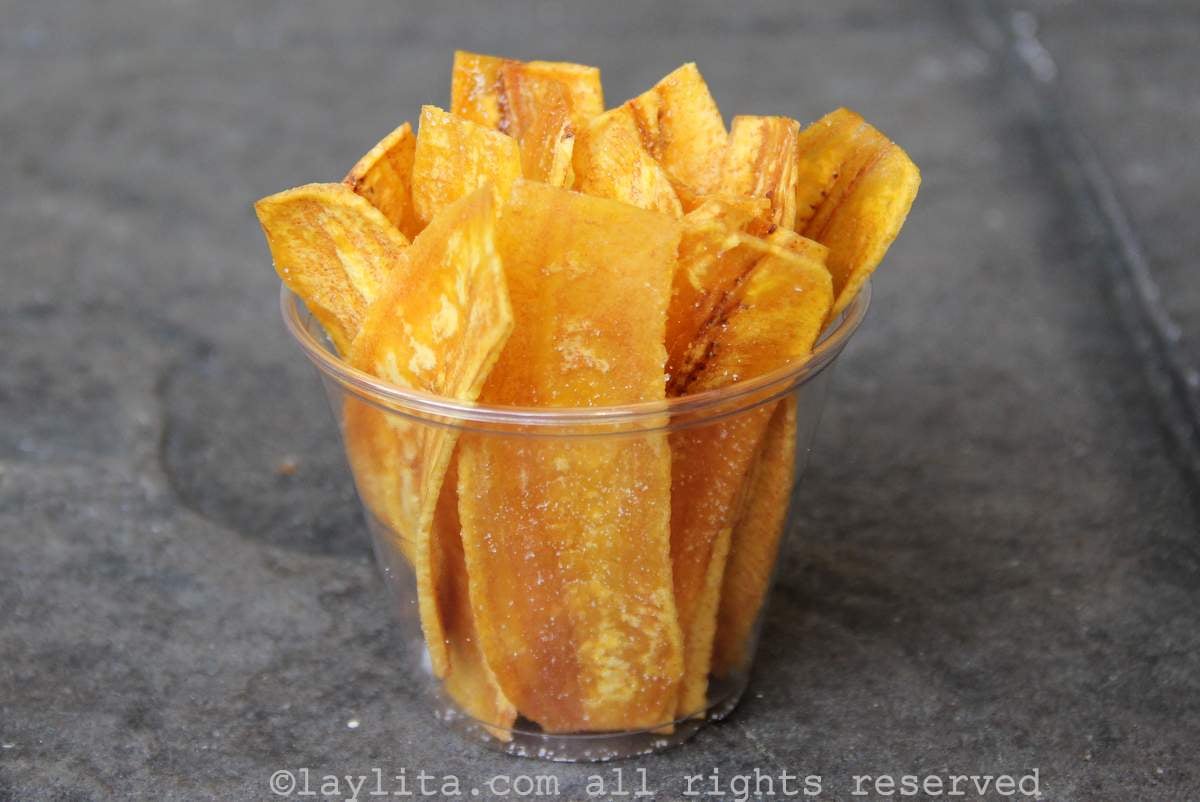
I grew up eating these green plantain chifles in Ecuador; you could say that they were one of my go-to childhood snacks. In Ecuador, these fried chips are sometimes made with green bananas or guineos verdes, especially at home when you might have some green bananas around (or growing in the yard). Most chifles sold by street vendors, restaurants, or stores are usually made with green plantains – they are more solid and easier to slice than green bananas.
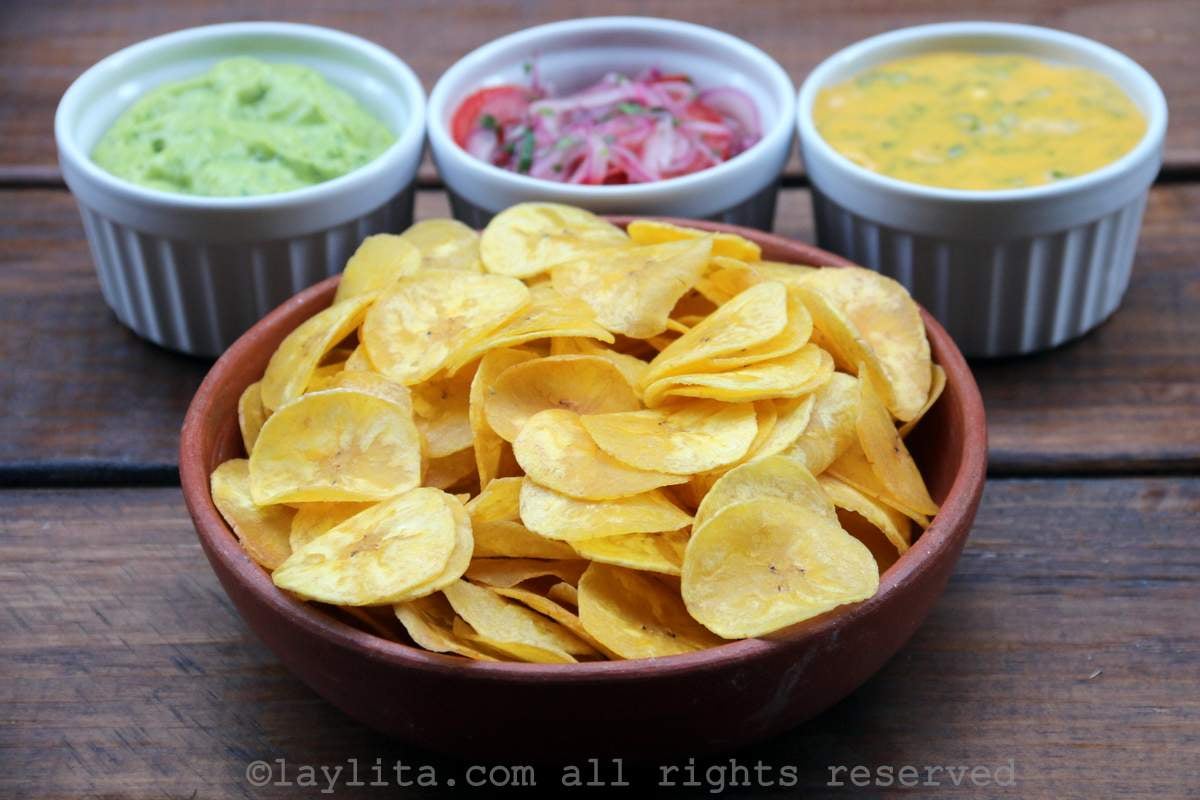
However, there is something very comforting about the delicate flavor of the variation made with green bananas. That homemade factor of the green banana chifles is one of the reasons I probably associate that style of chips with comfort food.
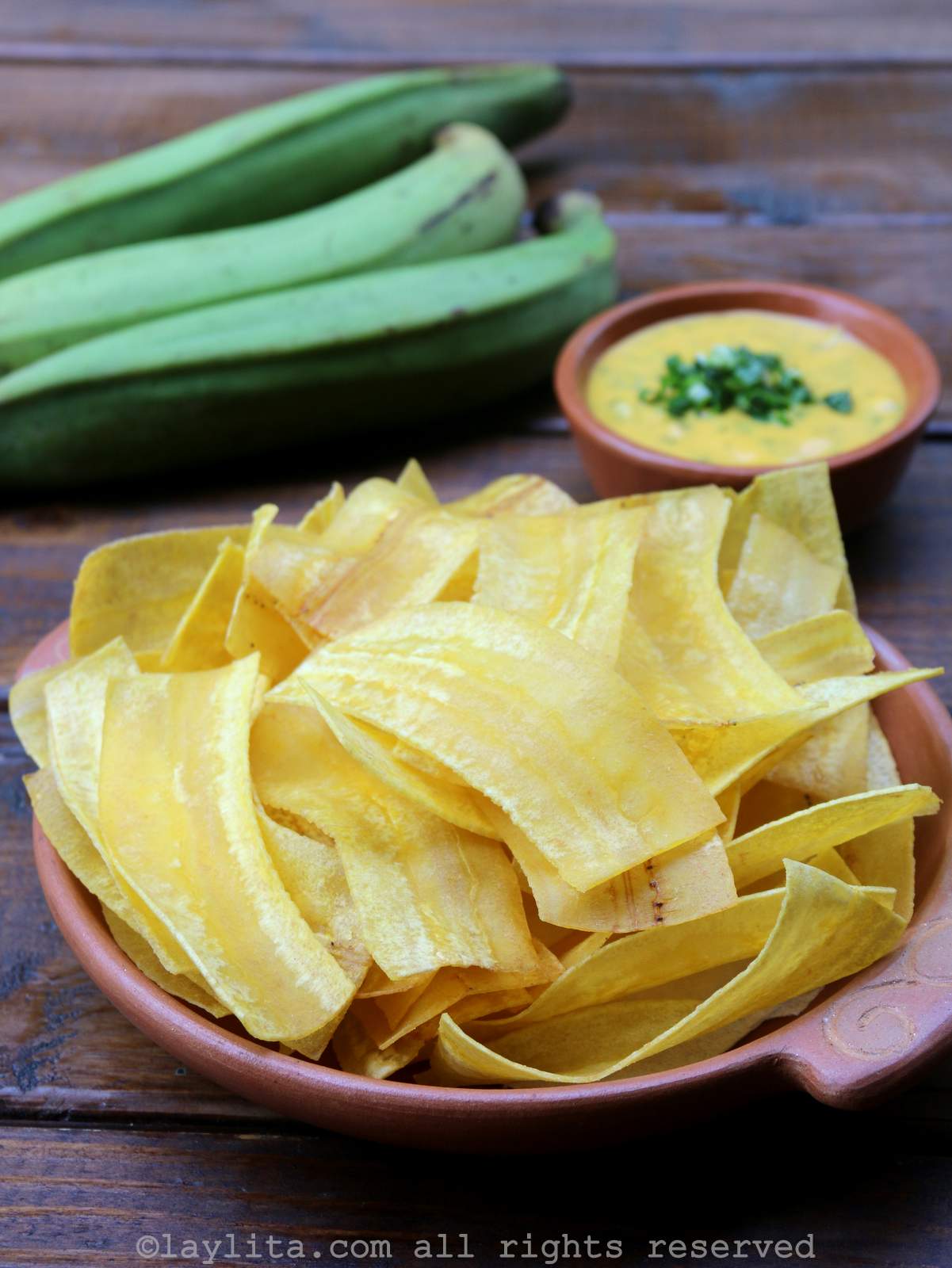
Something about the days getting weather makes me crave traditional Latin/South American street food; it must be just being able to spend more time outside. It is very typical to see people selling these plantain chips in small bags outside schools and at local events. In my hometome of Loja, they are usually drizzled with a salsa rosada – very similar to one for salchipapas.

These days it is now very easy to find the chifle style green plantain chips for sale at most grocery stores in the US (and even Europe – last summer, I found them at Carrefour in France). But like many Latin food snacks, the homemade version is so much better, and nothing beats eating them freshly made and hot out of the pan. These yummy plantain chips are also popular in many other Latin American countries and go by mariquitas, chicharitas, platanutres or plataninas, depending on country or region.
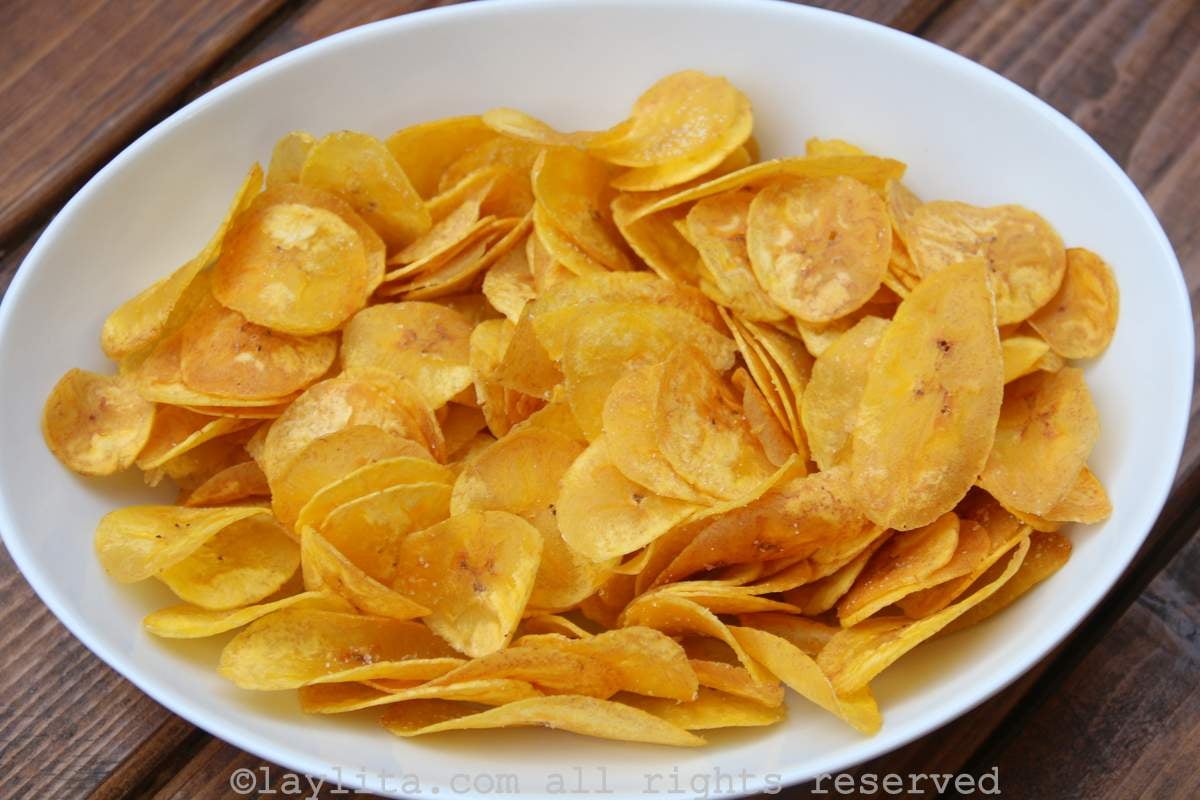
Variations of chifles
The word chifle itself refers to a thinly sliced fried chip. So while the most popular type of chifles are made with plantains, there are also chifles de camote or sweet potato chips and chifles de yuca or cassava chips.

Some variations and twists for the green plantain chifles include making them with green bananas, as mentioned before. I’ll go into more detail about those in the next section because they deserve more recognition than they currently get. Here are some additional twists that you can add to your chifles:
- Add hot peppers or garlic to the oil to infuse that flavor into the chips.
- Sprinkle flavored salt on top instead of regular salt.
- For healthier variation, you can make them in the oven or the air fryer.
- If you want them thicker, then you probably want to try patacones or tostones.
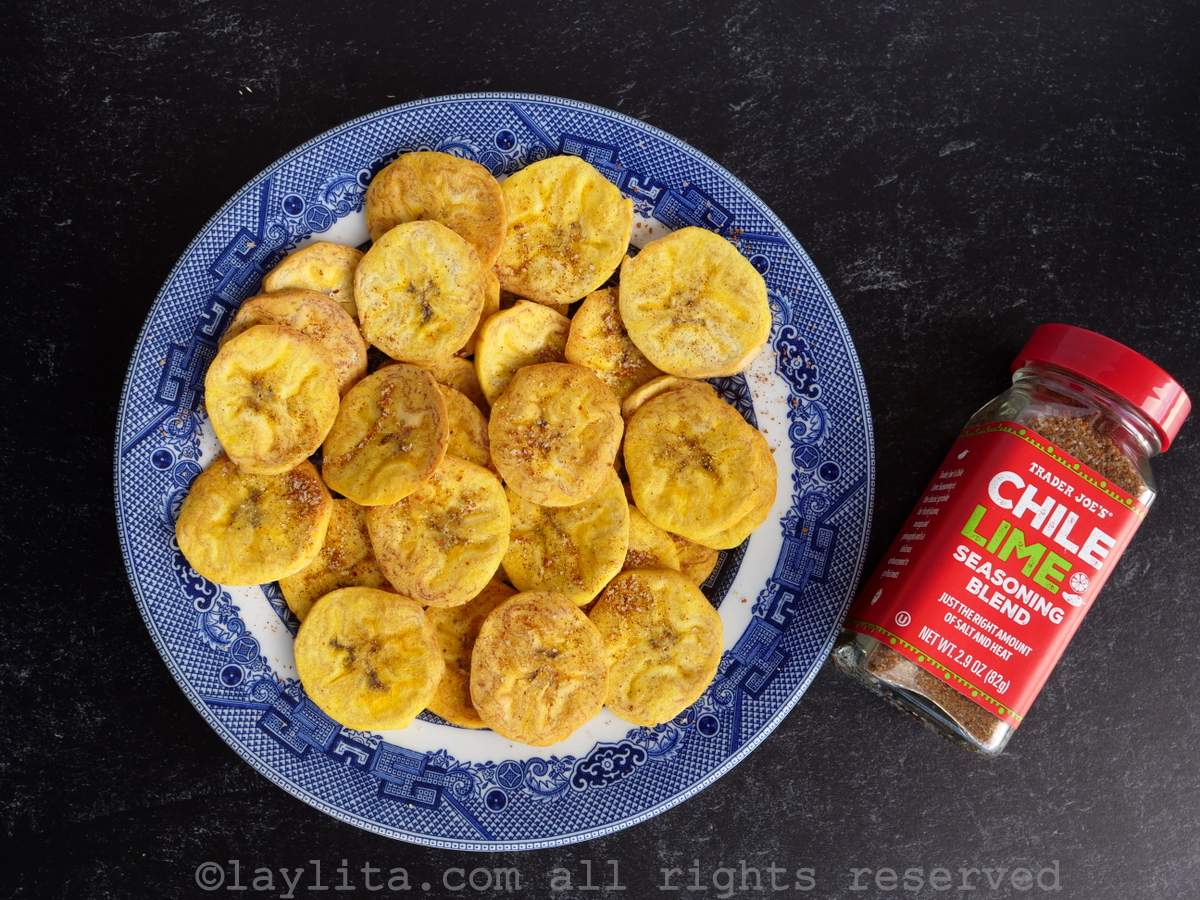
Using green plantains vs very green bananas (aka guineos verdes) to make chifles
It is probably easier for most of us who live outside of Latin America to make these with green plantains since green bananas can be hard to find. And if you do find them, they need to very very green bananas, not just green looking on the outside but ripe on the inside. I can find them occasionally. In those rare instances, I grab as many green bananas as I can get and make a variety of dishes with them: these chifles, as well as a soup called arvejas con guineo and another soup called repe lojano.
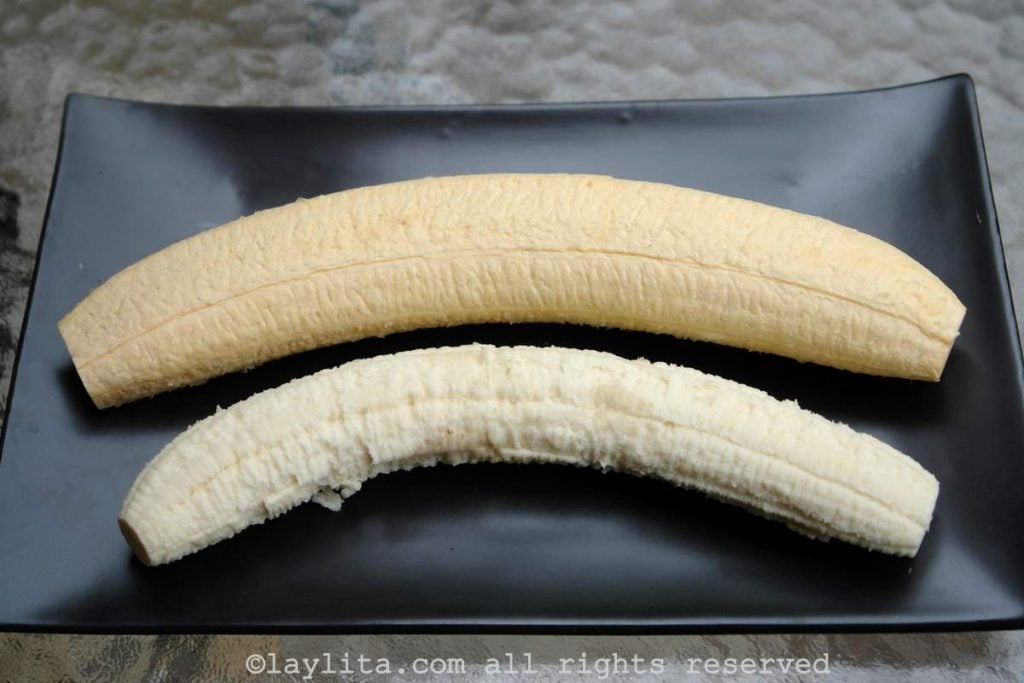
I tend to treat ripe bananas as fruit, and green bananas as a vegetable. There is a subtle taste difference the two types of chifles, the green banana ones have a much more smooth and delicate flavor, while the green plantains ones have a stronger chippy flavor. Also the color is different, both raw and cooked, the plantains are darker while the green bananas have a more pale color.
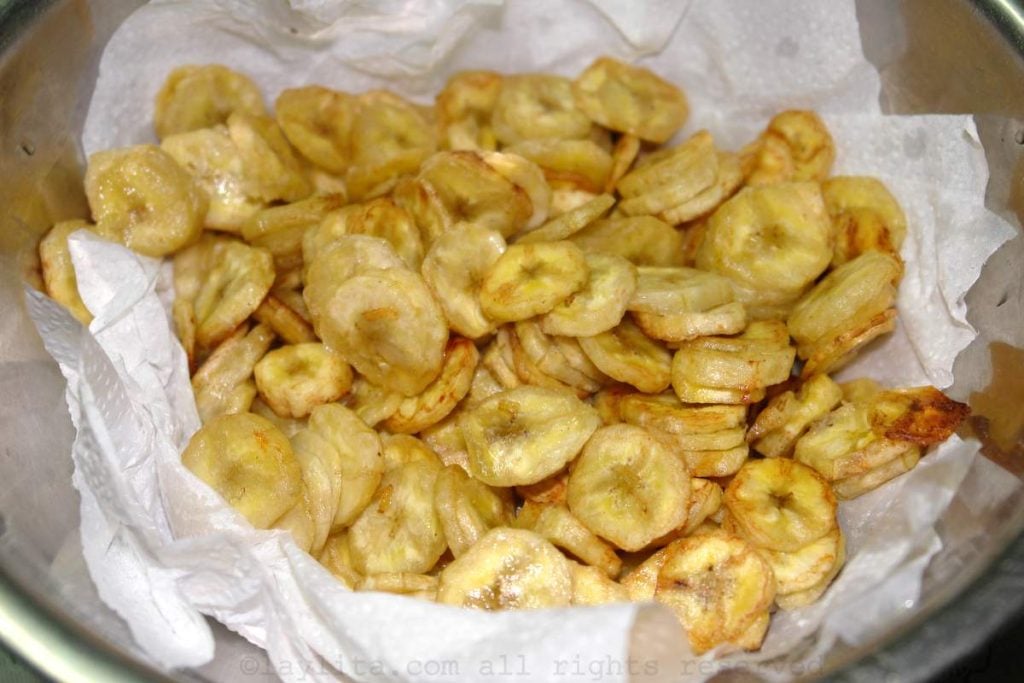
Another difference is the consistency; green bananas are very sticky and not as easy to handle. I recommend cutting them into rounds and slightly thicker if trying chifles with green bananas. In general, chifles or chips made with green plantains are both easier to find and make, but if you do ever find some very green bananas, try it and you will taste the difference.
The best way(s) to eat these chifle style thin fried green plantain chips
These green plantain chifles are a great snack on their own. However, a good dipping sauce, or selection of sauces can take them to the next level. Some of my favorite sauces to serve with these chips include tomato and onion curtido salsa, an avocado salsa or guacamole, a spicy aji criollo salsa or spicy tree tomato hot sauce.
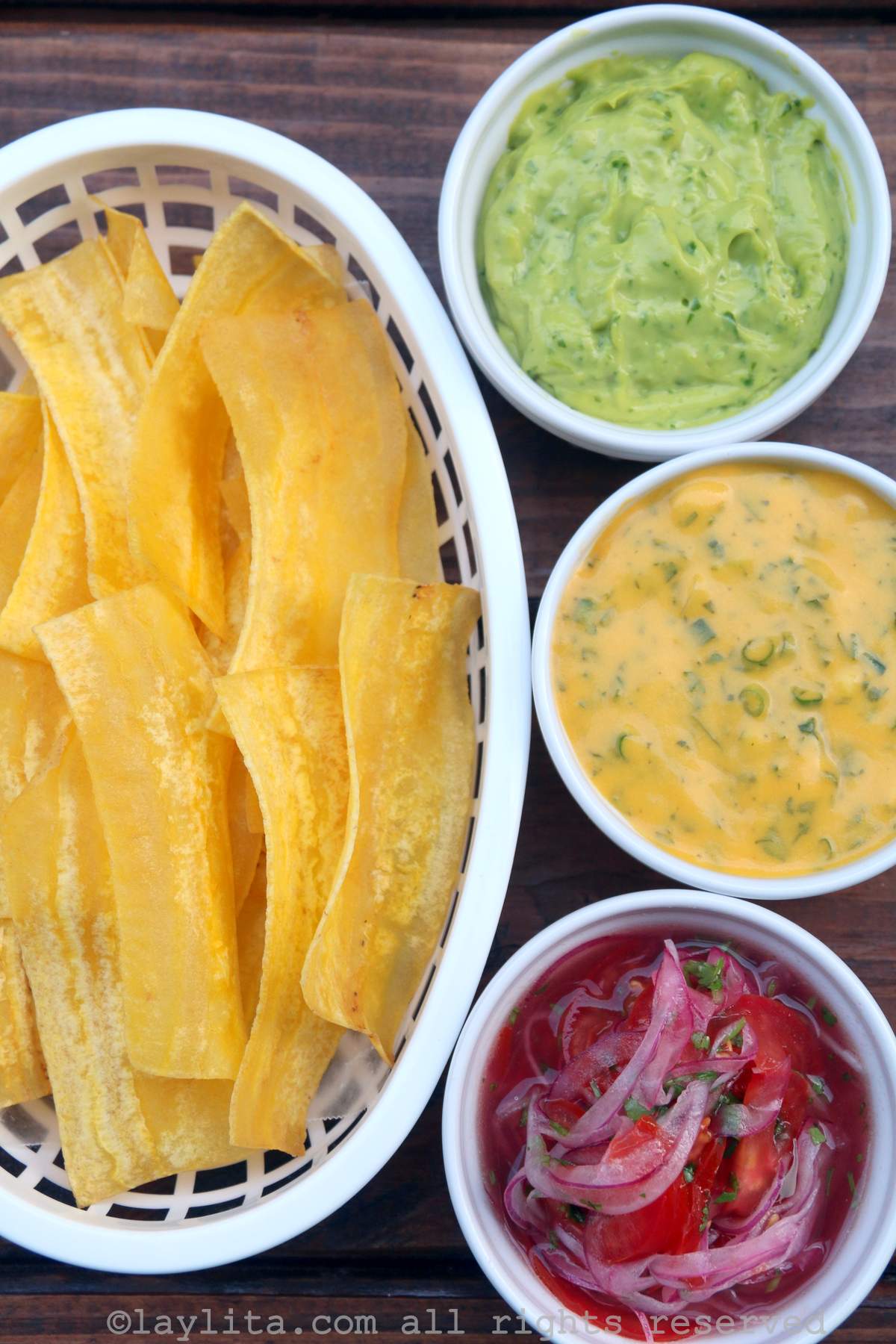
As I mentioned before in my hometown they also serve them with salsa rosada, a tomato mayo sauce, can be made by mixing mayo + ketchup plus a few other condiments as the basic salsa rosada. Or you can make it from scratch using fresh ripe tomatoes the way they do in Loja.
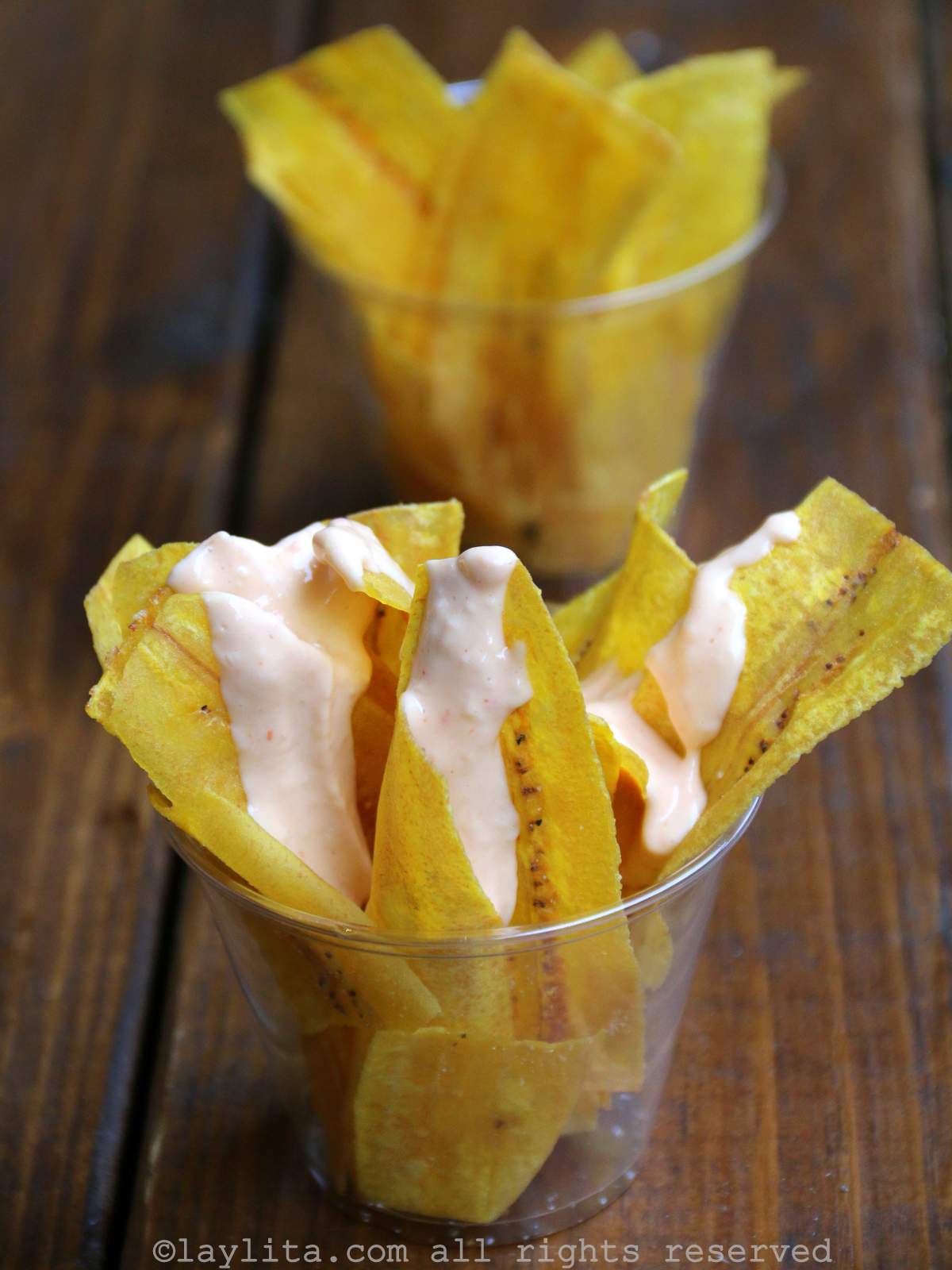
Chifles are a great garnish for ceviches. There’s even a dish we call Ceviche Volquetero or Truck Driver’s Ceviche that consists of chifles, chochos or lupini beans, tostado or cancha style corn nuts, and canned tuna fish mixed with tomato/onion curtido. Many would probably not consider it a “real ceviche”, but it’s a delicious snacking platter or even a meal in itself.
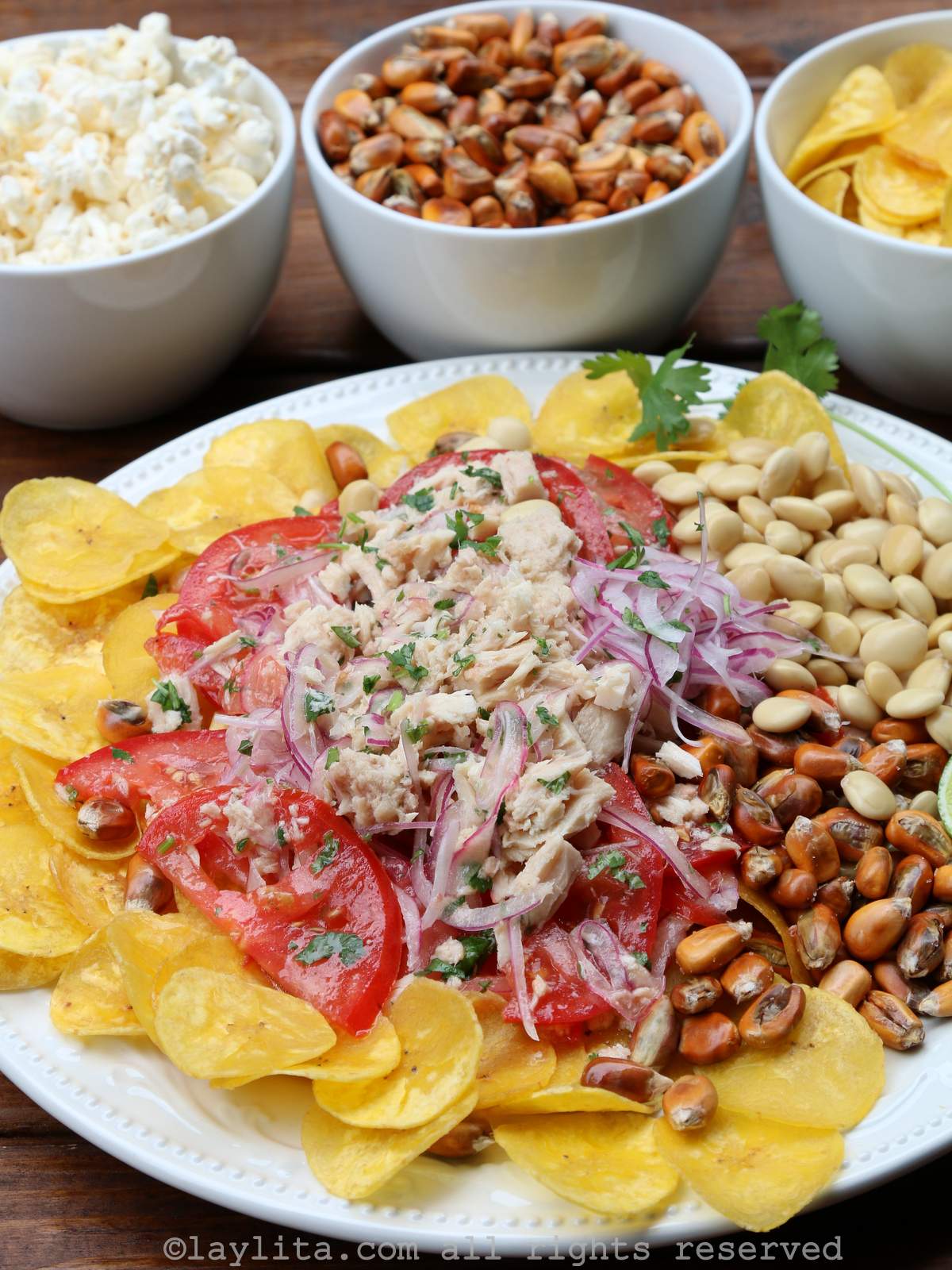
These fried plantain chips are also perfect with a nice cold beer. There is even a brand of packaged chifles in Ecuador called chifles cerveceros aka beer chifles, that includes a yummy spicy version. You can also serve chifles as a crunchy topping for soups, the way we do in Ecuador with the fish encebollado soup.
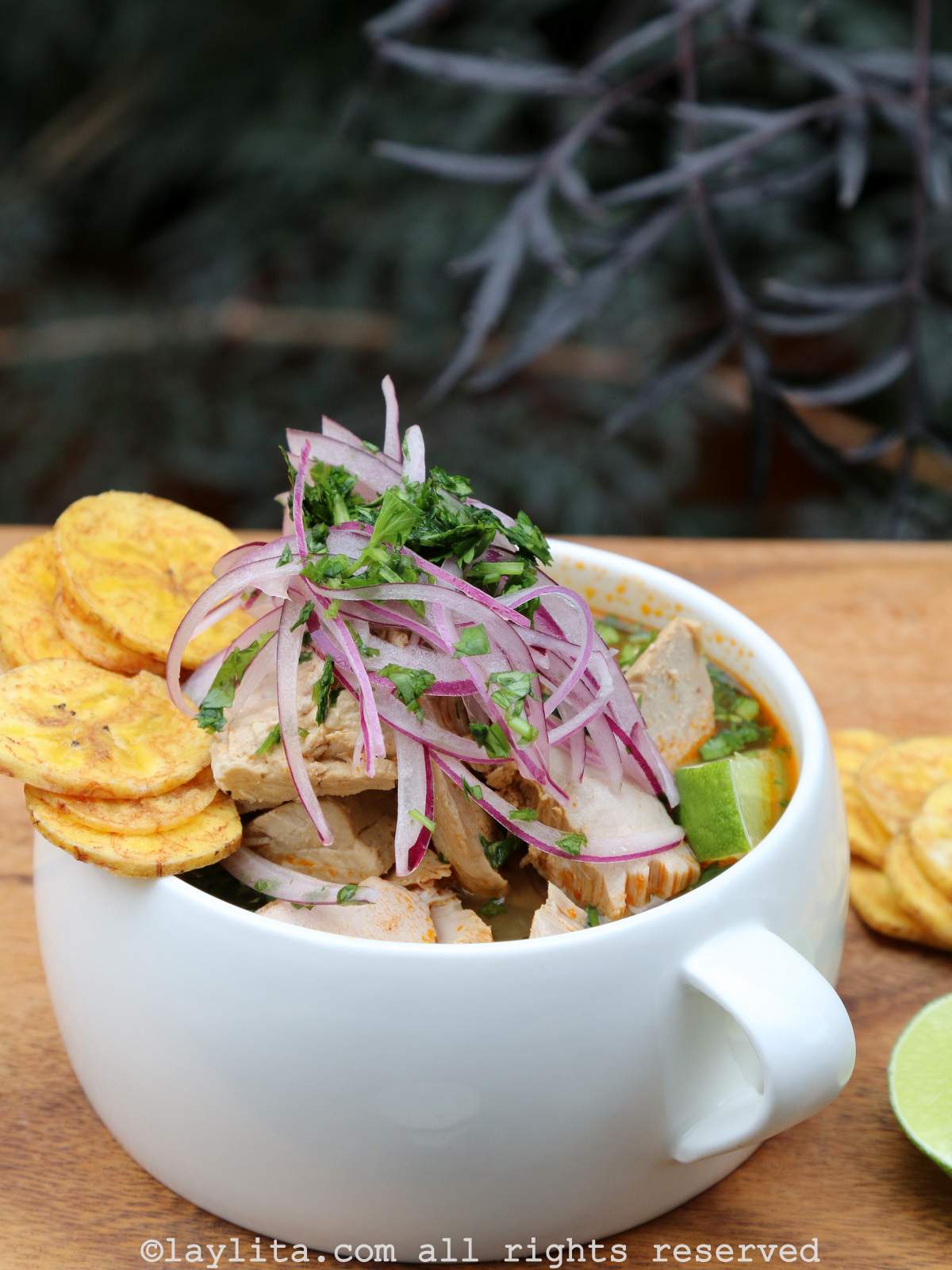
Another favorite of mine is to replace the traditional corn tortilla chips with these green plantain chips for nachos. I add grated/crumbled cheese on top, leftover diced chicken or steak, diced onions/tomatoes, and put in under the broiler. Then add some pickled onions, chopped cilantro/jalapenos, and salsa. Best snack ever!
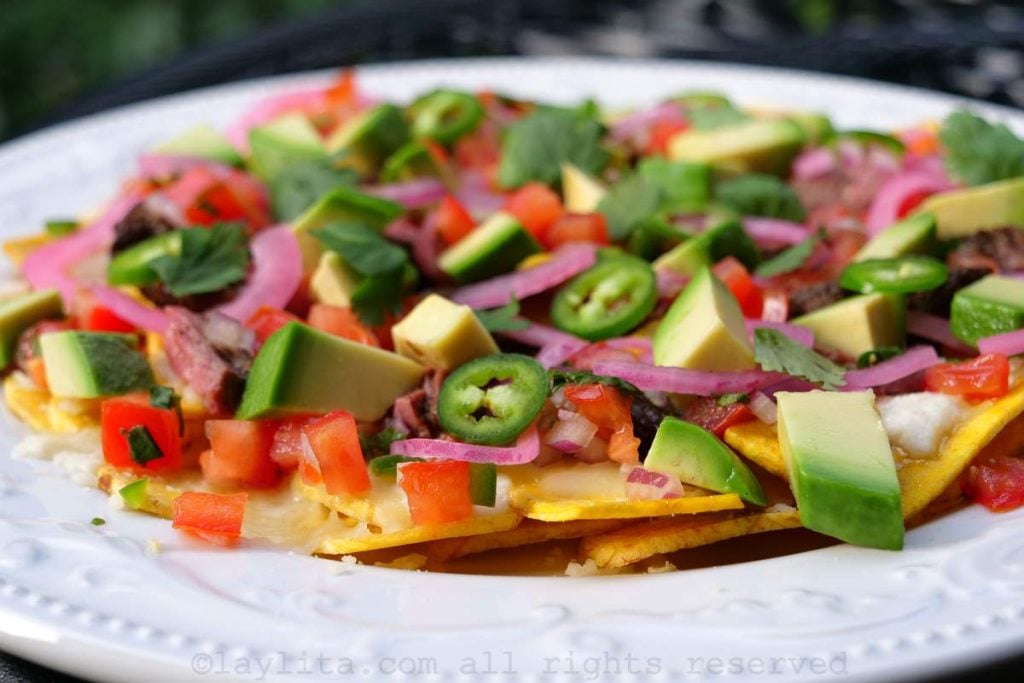
Tips and tricks for making the best thin fried green plantain chips:
- Use gloves when peeling the green plantains to avoid getting stains on your fingers. I also keep a bowl or baking dish with cold water to put the peeled plantains in; this prevents them from browning.
- Use a mandoline slicer to slice the plantains very thinly. You can cut them lengthwise into long strips. For mid-size strips, the plantain in half right in the middle and then slice lengthwise. You can also slice them in rounds or slightly diagonally.
- The plantains should be very green for best results. If they’re starting to get yellow, they are getting sweeter (and more sugary), making it harder to slice them as thin.
- Ensure the oil is very hot (~375F), and do not overcrowd the pan/pot. It’s better to work in batches and keep the plantain slices from sticking together. The thinner the slices, the faster they cook.

Chifles or thin fried green plantain chips
Ingredients
- Green plantains or very green bananas
- Oil for frying – use a type of oil that can handle high temperatures ie peanut oil
- Salt
- Optional : Hot pepper or garlic cloves for additional flavor variations
Instructions
- Wash the green plantains before peeling them. Both green plantains and green bananas can release a liquid that will stain your hands/clothes and even the cutting board, if you prefer to avoid stains wear an apron and gloves.
- The plantains will be easier to peel, but the flesh of the green banana is more likely to stick to its skin. Start by cutting off the point ends of the plantain, then use a knife to make a light cut into on the rigdes on the long side. Next use your finger to peel and remove the skin. If the plantains aren't very fresh they tend to be harder to peel or might have dry parts. You can also use a peeler to finish removing any bits of skin that didn't come off while peeling it by hand. Rinse or place the peeld green plantains in a container with cold water to keep them from browning.
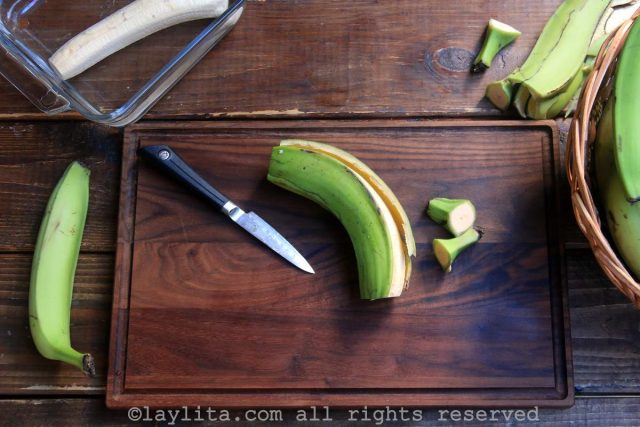
- Slice the green plantains. You can slice them lengthwise, full length or half length. You can also slice them as thin rounds or thin diagonal ovals. You can use a mandoline slicer to get that perfect thinness.
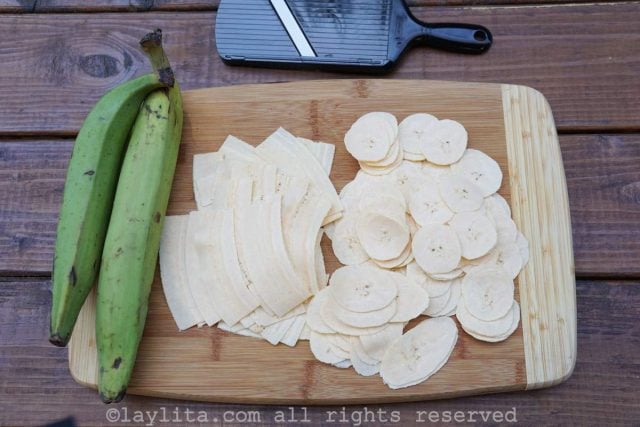
- Heat the oil, either in a deep sauté pan or fryer, ideal temperature for frying these is between 375 F-400 F, there should be enough oil to fully cover the green plantain slices. It's best to fry them in batches.
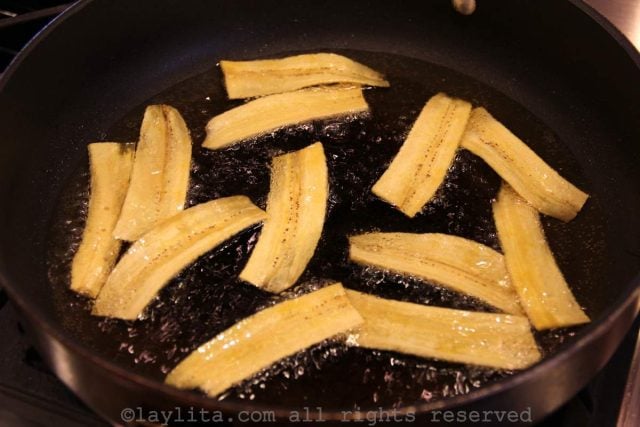
- Add the thin green plantain slices to the hot oil; be careful not to overcrowd to keep them from sticking together.
- Fry until the chips are a golden yellow color.
- Remove the chips from the oil and place them on paper towels to remove any excess oil.
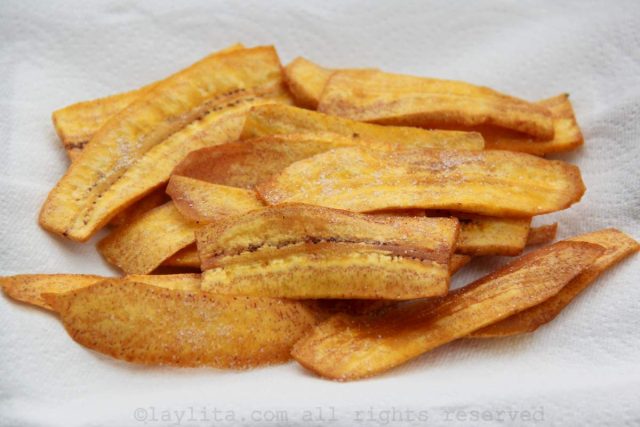
- Sprinkle with salt and serve either warm or cold.
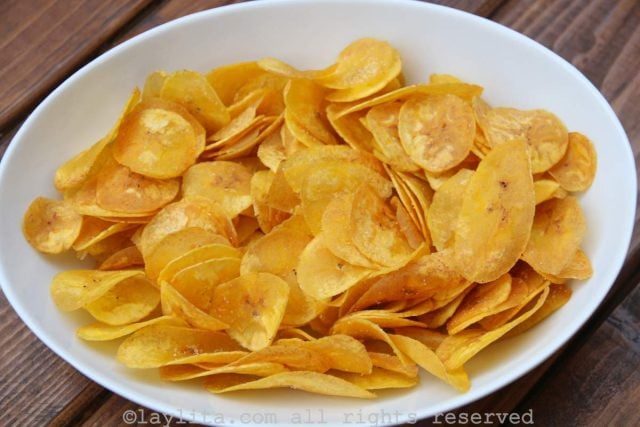
Notes
Step by step photos for making chifles or thin fried green plantain chips:
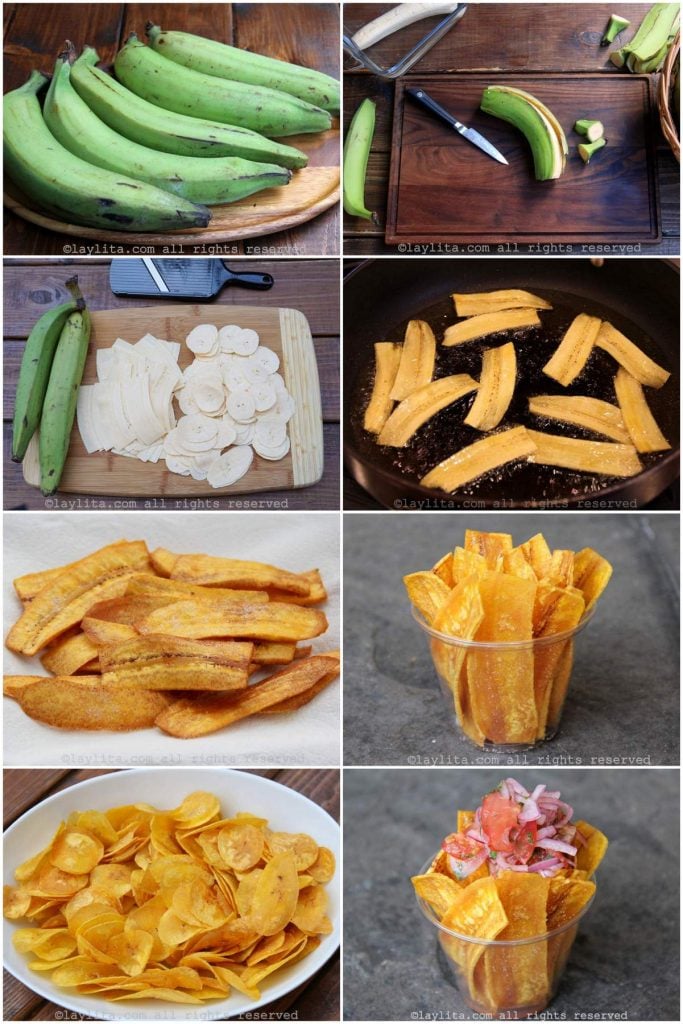
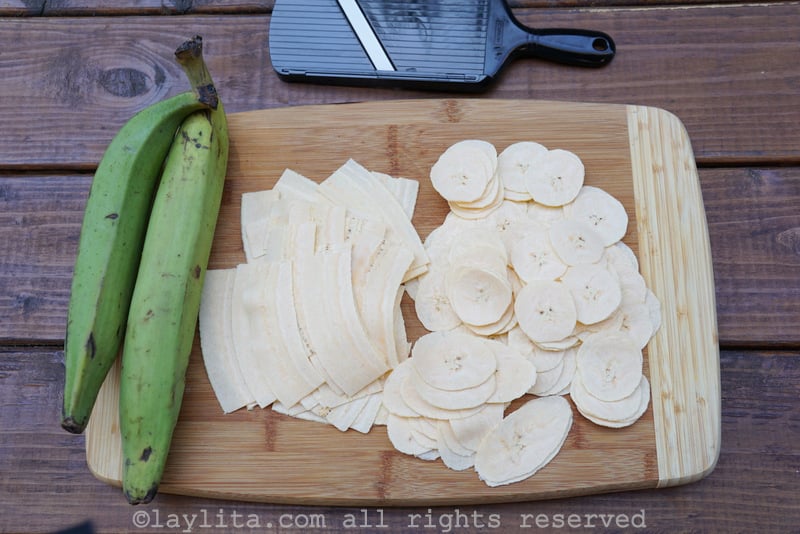
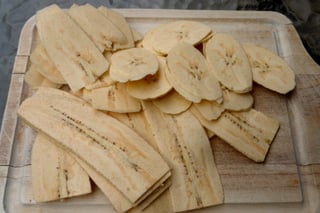
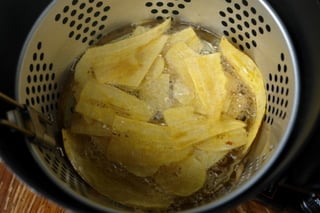
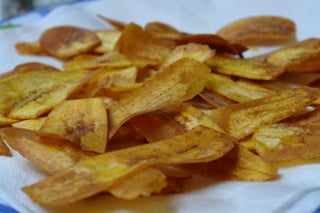
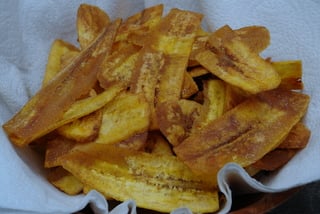
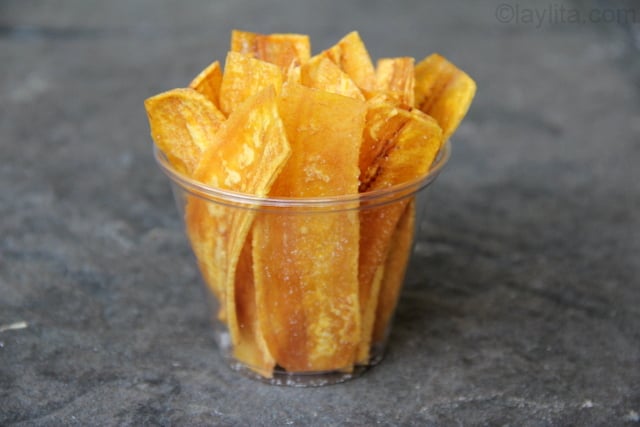
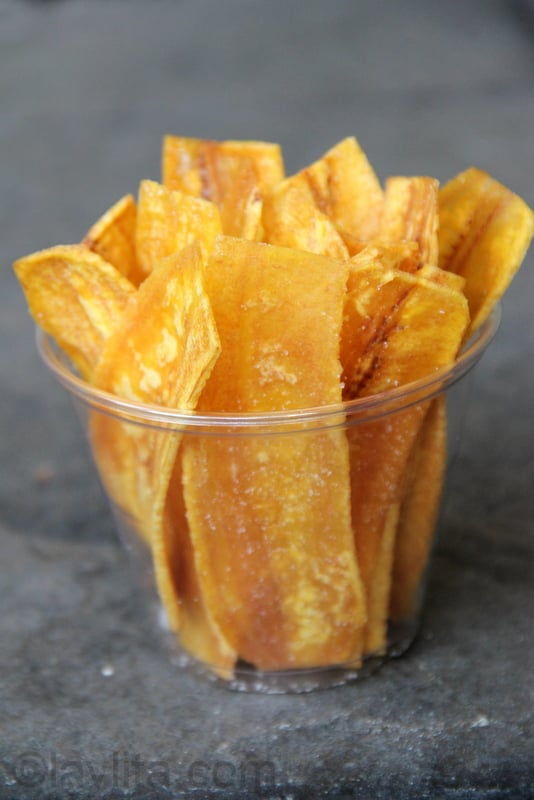
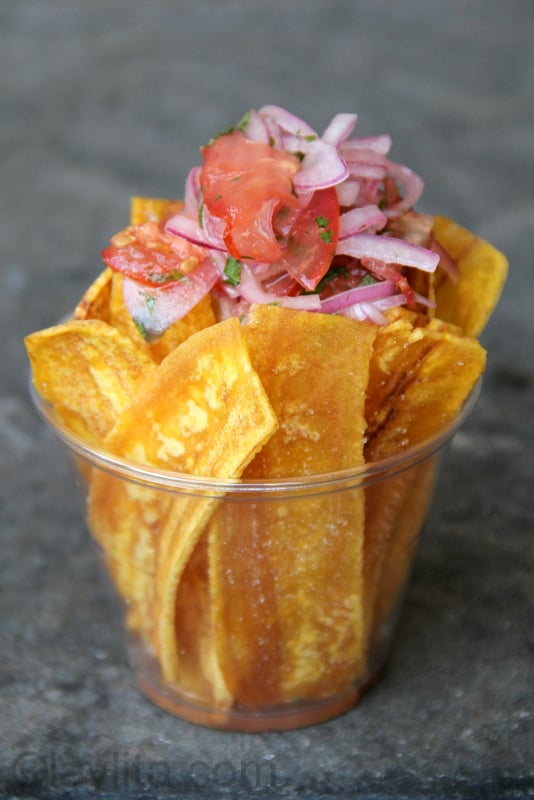
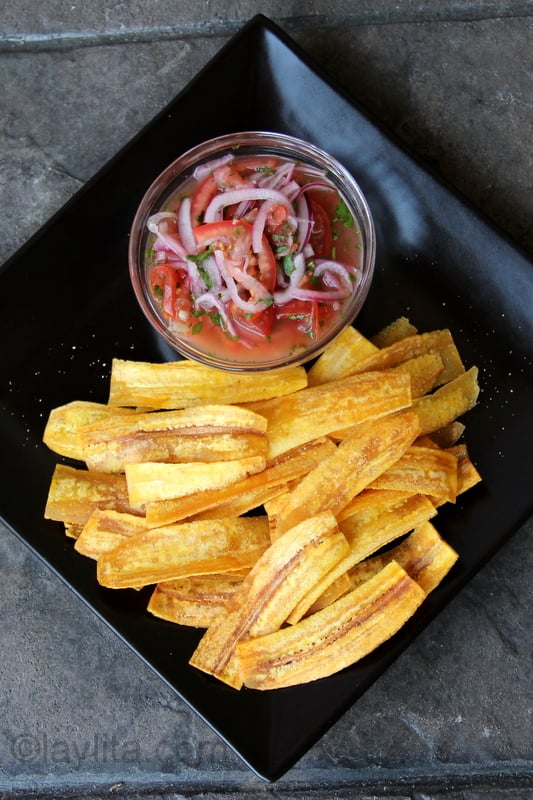
Making chifles with green bananas:

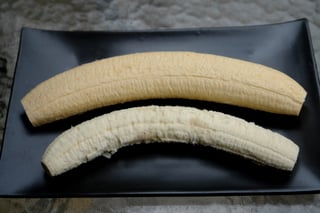
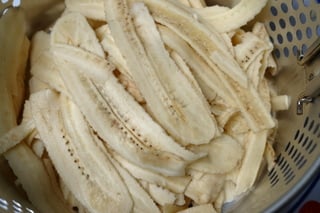
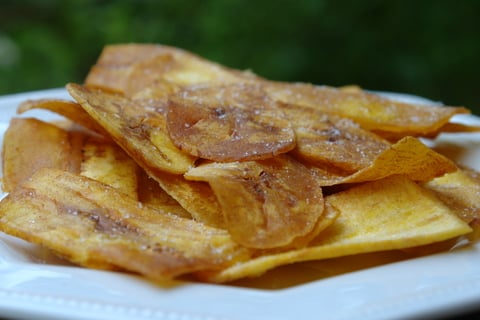
This recipe was originally published on May 31, 2008, and most recently updated on March 28, 2023.

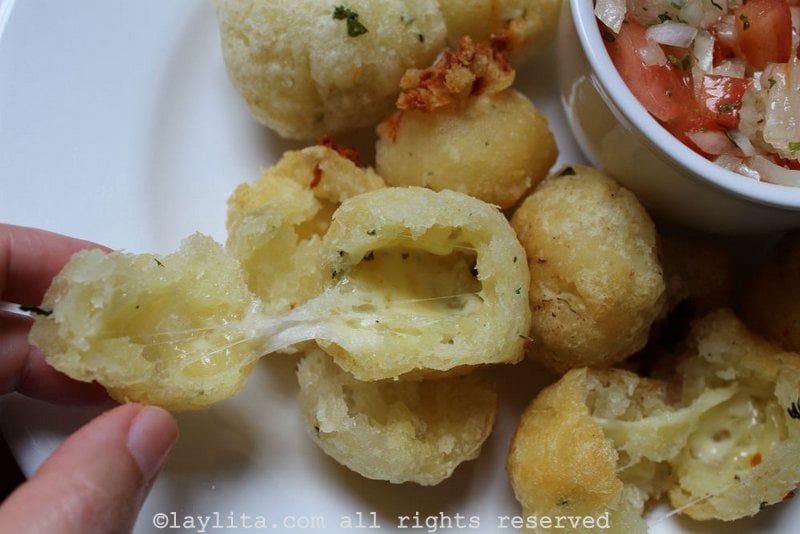
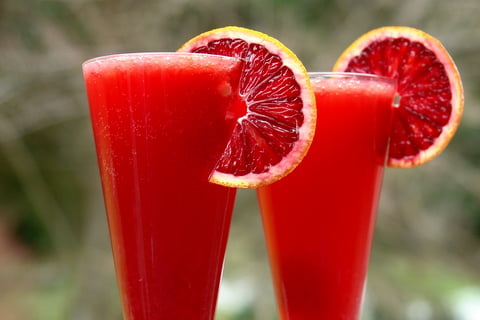
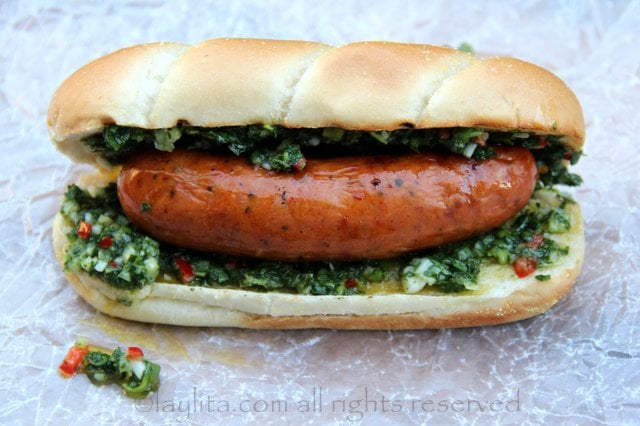
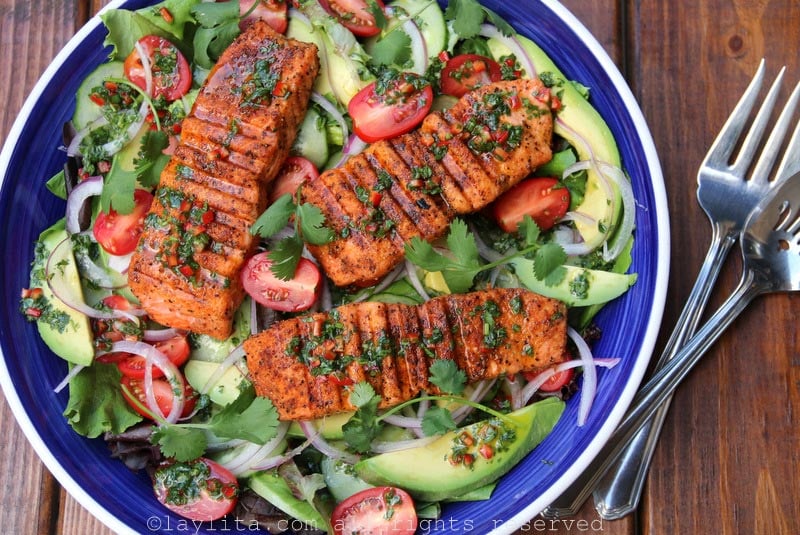
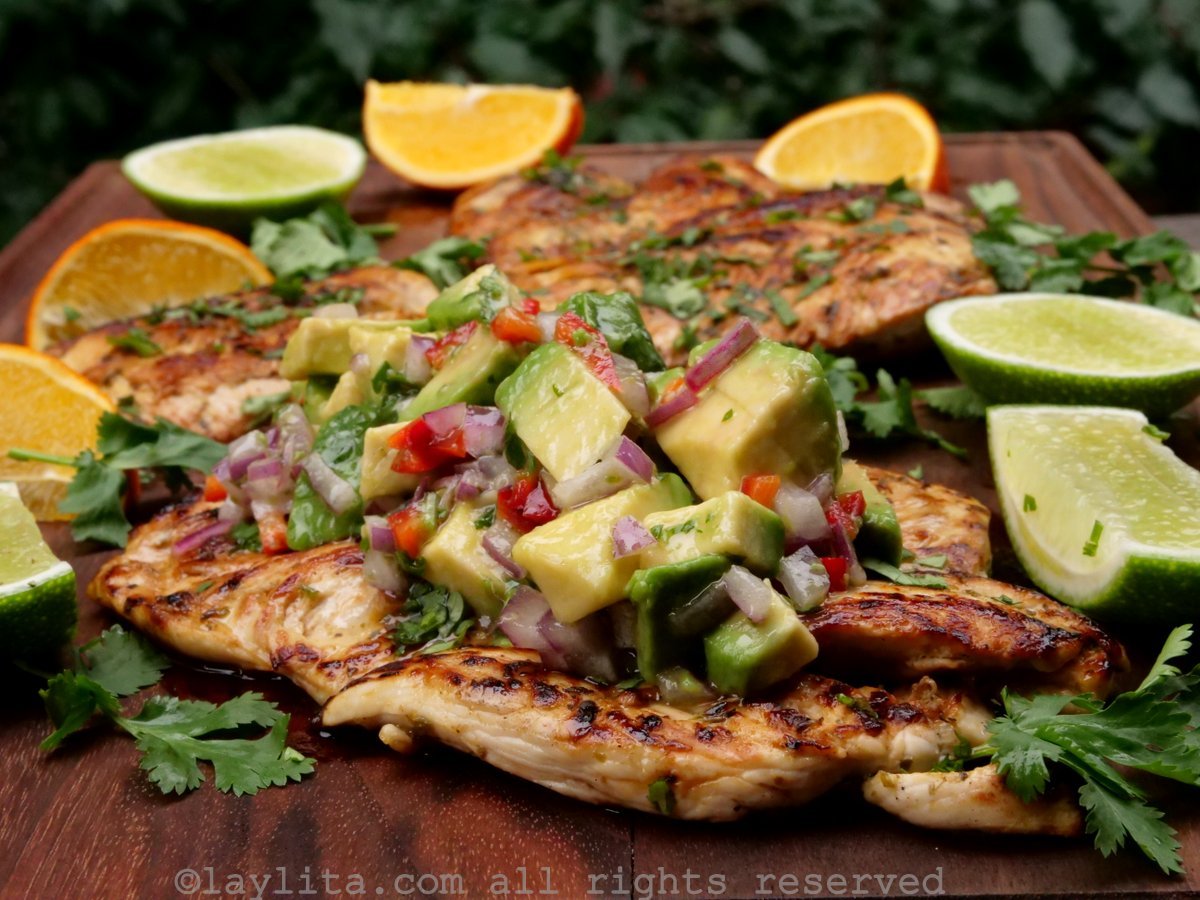
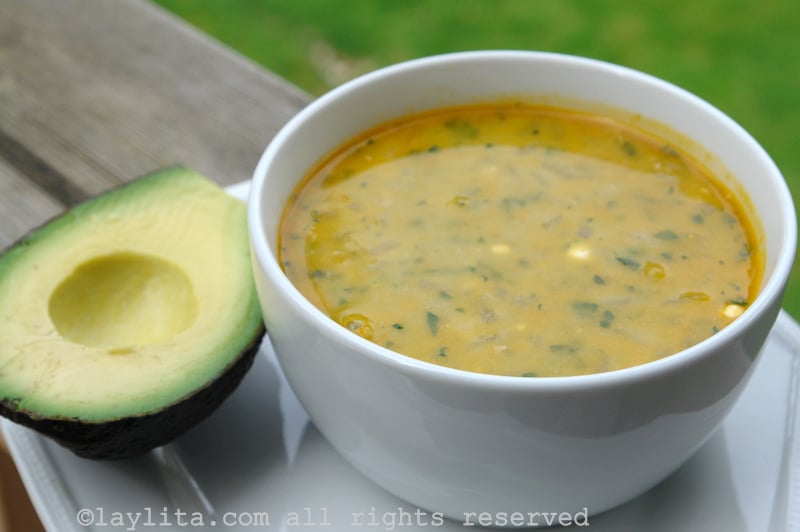
Esta receta fue muy bien. Fue muy rápido y muy delicioso. Me encanta la textura crujiente de los plátanos. Es como las patatas fritas, pero más saludable.
This you can’t do with the regular banana it’s with a special one called “Plátano macho”in México
Actually you can use either green plantains (platano macho) or regular (but very green) bananas to make chifles. Of course, in the US even the bananas that look green are usually not green enough, so it’s best to make them with plantains. Also, it is easier to slice the green plantains than the green bananas.
Currently subsisting off these while traveling in Ecuador! They have become my favorite – can’t wait to try and make these!
I work on a banana farm and bunchs that arents big enough we just chop down for mulch, Im about to start snagging them and making chips on the side of the road with coconut oil hawaiin clay salt and tumeric.
it’s always a joy to read your posts and enjoy the recipes. I am writing a post about bananas and will point them here for the chifle recipe.
I suspect you have one about patacones as well! I’ll continue my search!
Lisa/Z
Are the green bananas and green plantains just unripened or not quite ready for raw consumption fruits?
Also, do they get too crunchy to do thicker chips? I would love to make these as scoopers for a cilantro-corn salsa that I just made!
Hi Liz – Yes, they aren’t edible when they are raw (would be like eating a raw potato). They are crunchy, but if they are too thick they will be too hard to eat. If you want to make them thicker then try patacones or tostones (they are thick and crunchy but not too hard as they are cooked twice). https://www.laylita.com/recipes/2008/06/30/patacones-or-tostones/
Optional to green banana, i use raw green mangoes deep fried in coconut oil. After the fry, take a bowl and add pinch of red chilly powder, black pepperica and serve it with cream dip or tomato ketchup. Enjoy !